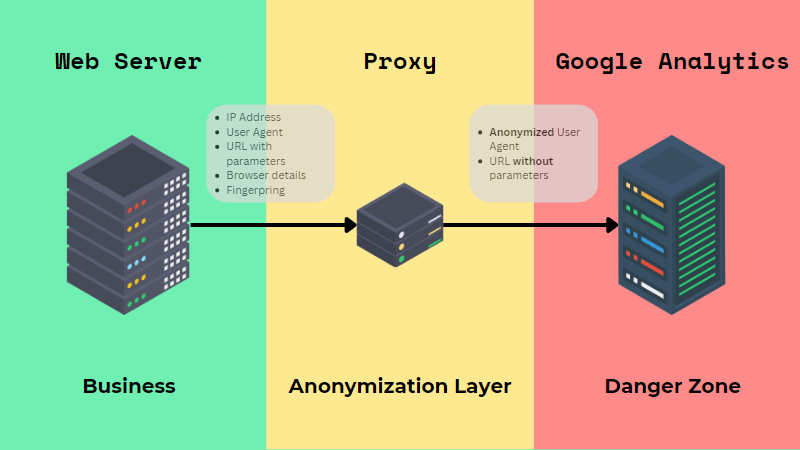Comprehending the Ins and Outs of Information Collection Limitations in Google Analytics to Enhance Your Insights
Browsing the landscape of information collection within Google Analytics reveals a myriad of intricacies that can dramatically influence the insights originated from your electronic analytics. As services progressively rely upon data-driven decision-making, recognizing the limitations and nuances of data collection comes to be vital. From data sampling in reports to the difficulties postured by cross-domain tracking and the surge of ad blockers, each element adds layers of complexity to the precision and deepness of the information at hand. The actual intrigue exists in exactly how these constraints can be not only acknowledged however tactically steered to raise the top quality and reliability of the understandings you draw out from your analytics initiatives.
Data Sampling in Reports
When analyzing information in Google Analytics, one important facet to take into consideration is the presence of data sampling in reports, which can influence the accuracy and reliability of insights acquired from the data. Information sampling is a method made use of to evaluate a part of information rather than the complete dataset.
The implications of information tasting can be substantial, specifically when making essential business choices based on the analytics information. By being mindful of information tasting in records, analysts can make more informed choices based on precise data insights.
Cross-Domain Tracking Obstacles
Cross-domain tracking provides a complex collection of difficulties that can impact the precision and reliability of data gathering in Google Analytics. Without appropriate configuration, Google Analytics might interpret these communications as separate sessions, leading to information fragmentation and incorrect understandings.
Failure to execute these modifications properly can result in data inconsistencies and insufficient tracking, impeding the ability to understand individual habits effortlessly throughout domains. Getting rid of these barriers demands extensive preparation, exact execution, and continuous monitoring to ensure data accuracy and derive meaningful understandings throughout domain names in Google Analytics.
Effect of Advertisement Blockers
The frequency of advertisement blockers poses substantial obstacles to information collection precision in Google Analytics (What Data Does Google Analytics Prohibit Collecting?). Ad blockers are web browser extensions or software program that customers install to avoid advertisements from presenting on web sites. These tools not only obstruct promotions however can likewise interfere with the monitoring codes made use of by Google Analytics to gather data. Consequently, website proprietors might experience inconsistencies in their analytics reports, leading to unreliable or incomplete information.

To alleviate the effect of ad blockers on data collection, website owners can discover alternative tracking techniques, such as server-side tracking or implementing permission management devices to motivate customers to try here disable ad blockers on their web sites. By proactively attending to the obstacles postured by ad blockers, businesses can improve the precision of their information collection in Google Analytics and boost their overall understanding of individual behavior.

Cookie Removal Effects
Occasionally, cookie removal can impact the dependability of data gathered by Google Analytics, influencing the accuracy of web site traffic analysis. Cookies are small items of information saved on an individual's device that help track their on the internet behavior. When users delete cookies, next page it can disrupt the tracking procedure, bring about spaces in data collection. This can cause skewed analytics reports, as returning site visitors may be counted as new ones after cookie deletion. If a substantial number of individuals consistently erase cookies, it can make it testing to track customer journeys precisely and understand their communications with the website. Therefore, businesses might choose based on inaccurate or insufficient information, influencing their advertising approaches and general efficiency assessment. To reduce the results of cookie removal, it is important to match cookie-based data with various other tracking techniques, such as server-side tracking or integrating first-party data sources, to make certain a much more comprehensive understanding of individual habits.
Information Privacy Regulations
In light of enhancing worries bordering data privacy and defense, companies using Google Analytics should adhere to stringent information personal privacy guidelines to make sure compliance and protect individual details. GDPR requireds that services acquire explicit authorization from customers prior to collecting and processing their individual data.
Aside From GDPR, there are various other information personal privacy laws like the California Customer Personal Privacy Act (CCPA) and the ePrivacy Instruction that organizations need to consider when making use of Google Analytics. These guidelines aim to protect customer data and offer people much more control over just how their info is gathered and used. By conforming and understanding with these information privacy visit this site guidelines, companies can construct trust fund with their users and show a commitment to information protection and personal privacy.
Conclusion
In verdict, comprehending the constraints of data collection in Google Analytics is crucial for boosting insights. Information sampling in records, cross-domain monitoring difficulties, the influence of ad blockers, cookie removal impacts, and information privacy guidelines all play a role in the precision and efficiency of the data gathered. By knowing these limitations and locating methods to reduce them, companies can guarantee they are making informed decisions based on trustworthy data.
When examining information in Google Analytics, one crucial facet to think about is the presence of information sampling in records, which can impact the accuracy and dependability of understandings derived from the data. To alleviate the results of cookie removal, it is important to match cookie-based information with various other monitoring approaches, such as server-side tracking or integrating first-party data sources, to guarantee a much more thorough understanding of customer behavior.

Data tasting in reports, cross-domain tracking difficulties, the influence of ad blockers, cookie deletion results, and data privacy guidelines all play a duty in the accuracy and completeness of the data gathered.